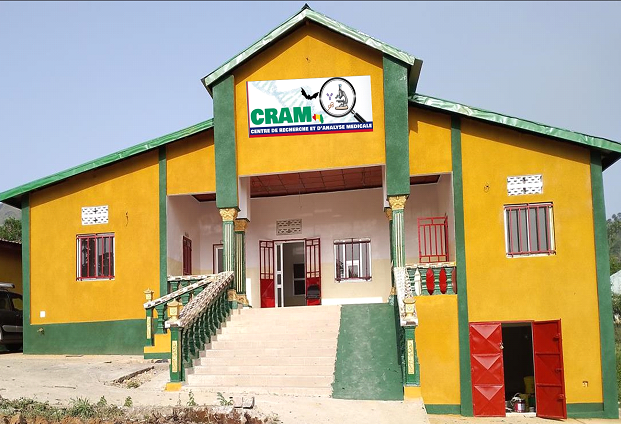
Here you will find information and resources on global health research activities in Guinea.
Whether you want to showcase your work on health research in Guinea or get involved in our initiatives, drop us an email, and let's get started!
About UsAligned with the vision of The Global Health Network (TGHN), "Equity in Health Research by improving methods, building careers & sharing knowledge," the Guinean Centre for TGHN is established as a hub to strengthen the research capacity development in Guinea. The centre is tasked with implementing TGHN's strategic vision and goals, promoting the network's resources and training programs to the national audience, and fostering partnerships with other organizations and institutions to further advance global health topics and health research. To be effective, the Guinean centre engages in activities that promote a strong understanding of the needs and challenges of health research in Guinea, along with a commitment to working with global partners to create an enabling environment for health research implementation in the following ways: I. Facilitating training initiatives and connecting researchers to the TGHN resource database II. Promoting mentorship and collaboration among researchers III. Supporting the exchange of knowledge and expertise Centre de recherche et d’analyse biomédicale (CRAM)
The Centre de Recherche et d'Analyse Biomédicale de Guinée (CRAM) is an apolitical activity aligned with the national health framework to improve the quality of healthcare and to add value to scientific research in Guinea. The centre’s activities are twofold: scientific research and epidemic diseases surveillance diagnosis. The CRAM center intends to conduct scientific research and provide high-quality diagnostic results for the well-being of the population. Research activities will help identify and eradicate emerging and re-emerging diseases such as the Ebola, Marburg, Lassa, SARS-cov2 and other pathogens in the Republic of Guinea and in the West African sub-region. While the diagnostic activities will focus on the diagnosis of tropical diseases such as malaria in all forms or types with new technological approaches. The CRAM center will not only contribute to strengthening epidemiological surveillance in the forest region in general, and in the Macenta district in particular, but also improves the living conditions of the population by creating jobs for unemployed young people.
The CRAM centre’s vision is to contribute to the well-being of the population by providing good health and environment that fosters comfort, security and safety. It also aims to address issues of gender representation, violence against women, as well as ethics, deontology, responsibility and the prevention and management of conflicts of interest.
In accordance with its legal statutes, CRAM's mission is to initiate, lead and manage actions to improve the health and living conditions of rural communities for durable and sustainable socio-economic development.
A key challenge of emerging disease surveillance is detecting these rare spillover events, particularly in rural communities with limited access to reliable healthcare facilities. Serological surveillance has enormous potential as a tool to monitor disease emergence. By detecting pathogen-specific antibody responses that can persist for years, serological assays substantially increase the probability of detecting rare events and simultaneously detect recent and historical exposure to multiple pathogens. For the past 5 years, we have completed and published four research projects regarding human exposure to wild pathogens through serological testing:
Our current study ‘’the serological evidence of Marburg virus among bushmeat hunters in Macenta district’’ is looking at the Marburg virus footprint among rural communities in Macenta. Further, the study intends to identify practises that promote disease transmission and spill over event in communities and identify Marburg virus in the Macenta fruits bats colonies. This study is done in collaboration with the university of Oxford, and UK-PHRST, England. The research vision is grounded in a commitment to advancing the science of disease surveillance in Guinea and enhance the capacity of public health systems to detect, monitor, and respond to infectious disease threats and support the country’s evidence-based decision-making to promote global health security, and ultimately improve health outcomes for communities worldwide.
To maintain our collaborative work with partners both internally and externally, and in terms of local capacity building sustainability, we have newly built our first facility (figure 1) to hold our research and diagnostic activities. The laboratory comprises five sections with a total of 16 rooms including molecular biology platform for RT-PCR testing to identify any occurring viral infection disease; the enzyme linked immune-sorbent assay (ELISA) platform to detect previous exposure to viral diseases; the genomic sequencing platform to identify viral genomes and the cold chain room which requires an appropriate power supply 24/7 for samples and reagents storage.
To carry research activities and provide a point-of-care diagnostic to the health system by quickly testing haemorrhagic fever suspected samples from the Macenta district with over 500,000 inhabitants and surrounding towns including Lofa county in Liberia, there is a huge need of:
Focusing on the CRAM laboratory's critical roles in public health and disease surveillance, the center directly contributes to the social welfare and economic development of Guinea.
|
Key Areas of Focus:
 |
 |
Knowledge mobilization and sharingThe Guinea Centre works closely with TGHN Team to Identify & Share High-Value Research Resources for Local/Regional Groups in TGHN Africa/Asia/LAC Hub. |
Early Career Researcher Capacity BuildingThe Centre Empowers Early Career Researchers: Hands-On Workshops, Webinars, Career Development, and Site Exchange Initiatives for Unlocking Potentials Through Education. |
 |
 |
Antimicrobial Resistance (AMR) and One HealthAMR is escalating in Guinea due to antibiotic misuse, poor infection control, and inadequate surveillance. Research and One Health training are crucial for effective solutions. |
Grantsmanship and CollaborationThe Guinea centre equips early career researchers with resources to secure funding, including training, mentorship, and networking opportunities to promote research advancement in Guinea. |
 |
Women in Global Health Research and LeadershipAs a key priority, the Guinea centre focuses also on Empowering Women in Evidence-Based Research for Guinea's Advancement and Inclusive Development. |
Fieldwork events photos
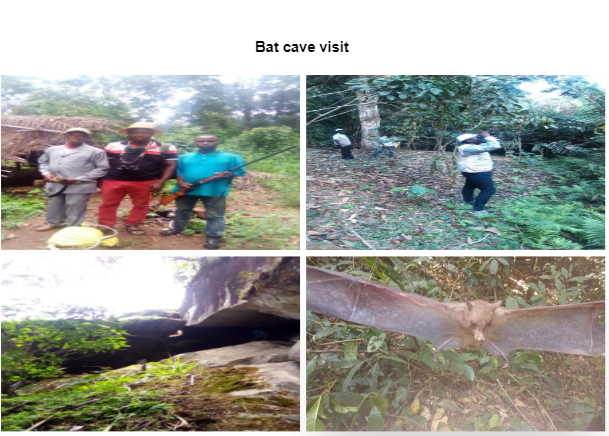 |
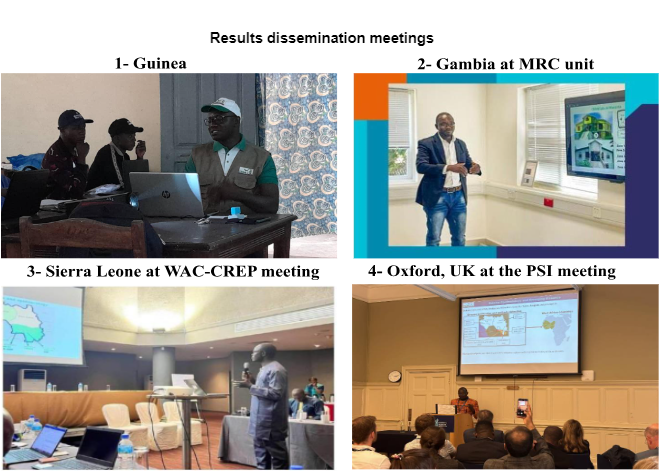 |
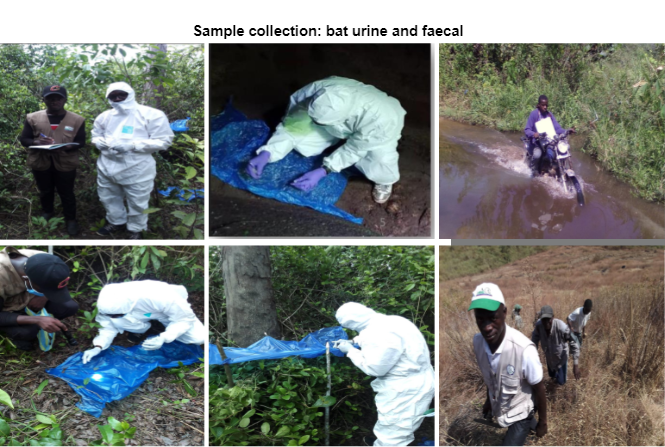 |
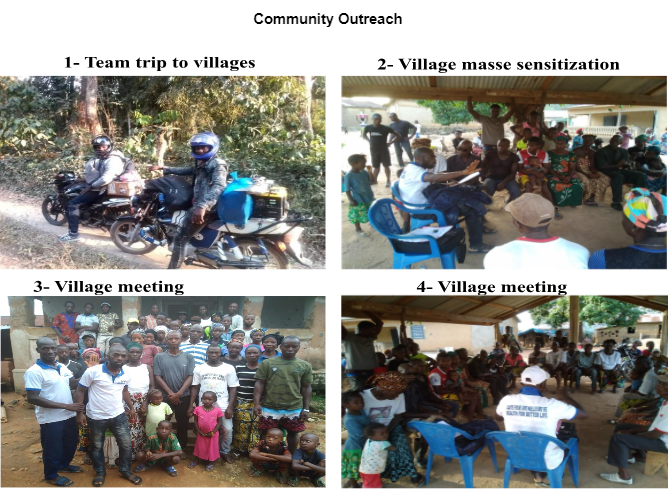 |
Resources:
Here, we attempt to bring together information, resources and research from organizations and networks in Guinea on Global Health Research. The aim is to make it as easy as possible to find the right information, support and guidance, by connecting Guinea researchers and making all reliable information and tools accessible and discoverable.
The TGHN calendarEvents from across The Global Health Network which may be of interest |
